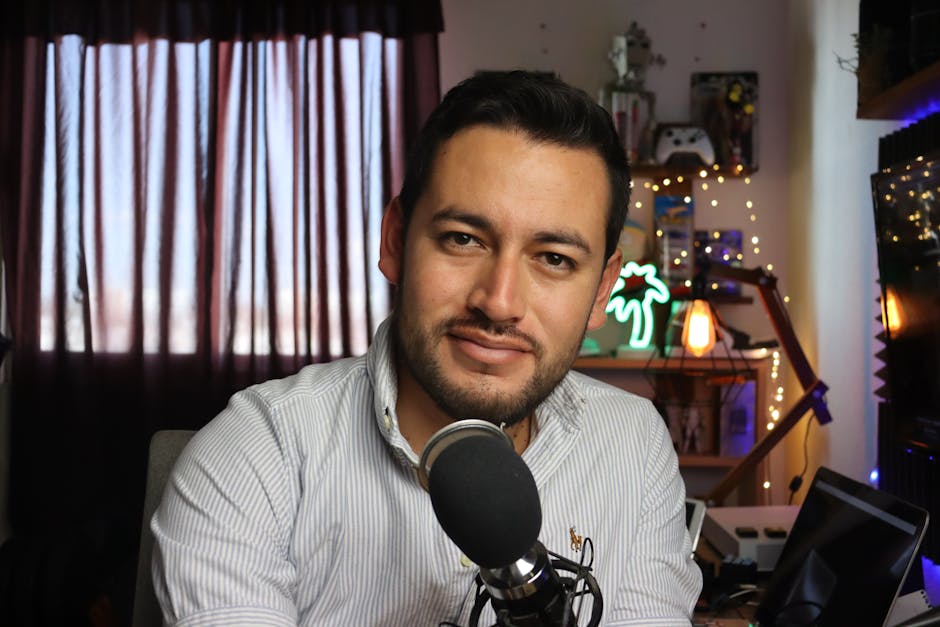How I Use a Podcast Trailer to Hook New Listeners.
How I Use a Podcast Trailer to Hook New Listeners
In the vast, ever-expanding ocean of podcasts, simply having great content isn’t enough to stand out. You need a compelling invitation, a sonic handshake that grabs attention and promises value. For me, that invitation is the podcast trailer. It’s not just a formality; it’s a strategic, carefully crafted piece of audio marketing designed to do one crucial thing: hook new listeners before they even press play on a full episode. Over the years, I’ve refined my approach, learning what truly resonates and what falls flat. This isn’t about generic advice; it’s about my specific, battle-tested methods for turning curious browsers into dedicated subscribers, all through the power of a well-executed trailer.
My Core Philosophy: Why a Trailer Isn’t Just an Intro, It’s an Invitation
I view my podcast trailer as much more than a simple preview. It’s the front door to my audio world, the first impression, and often the deciding factor for someone scrolling through a crowded podcast directory. My philosophy centers on the idea that the trailer isn’t just selling a podcast; it’s selling an experience, a solution, or a connection. It needs to encapsulate the show’s spirit, its unique selling proposition, and the core value it offers, all within a tight, engaging timeframe. This means I approach its creation with the same meticulousness as I do a full episode, if not more so, because its job is to convince someone to invest their precious time.
Defining My Trailer’s Purpose Beyond the Obvious
Before I even think about scripting, I ask myself: What single, overriding emotion or thought do I want my listener to have after hearing this trailer? Is it curiosity? Inspiration? A sense of belonging? For my podcast, which often delves into complex topics, my primary goal is to establish immediate credibility and hint at the depth of discussion, while also making it feel accessible and intriguing. It’s about creating a sense of anticipation – a feeling that they absolutely *must* hear more to satisfy their newfound curiosity. This clarity of purpose guides every subsequent decision, from voice-over tone to sound effects.
Crafting My Auditory Tease: What Goes Into My Trailer’s DNA
The content of my podcast trailer is where the magic truly happens. It’s a delicate balance of revealing just enough to entice without giving away too much. I think of it as a movie trailer for my ears – high-impact, emotionally resonant, and designed to leave you wanting the full feature. I don’t just pick random clips; I strategically select moments and craft original content that collectively paint a vivid picture of what a new listener can expect.
Selecting Key Moments and Crafting Original Hooks
My process begins by sifting through past episodes or outlining future ones to identify the most compelling soundbites. These aren’t necessarily the funniest or most controversial moments, but rather those that best exemplify the show’s core themes, the host’s personality, and the types of insights listeners will gain. I look for snippets that are:
- Intriguing: Posing a question or hinting at a revelation.
- Representative: Giving a true taste of the show’s tone and style.
- High-Quality: Clear audio, strong delivery.
Beyond existing clips, I always record original voice-over narration specifically for the trailer. This allows me to directly address potential new listeners, introduce myself and the show’s premise in a concise, energetic way, and articulate the unique value proposition. This narration is meticulously scripted to be punchy and direct, avoiding filler words and maximizing impact. It’s where I explicitly state what the podcast is about, who it’s for, and why they should listen.

The Art of the Concise Call to Action (CTA)
A trailer without a clear call to action is a missed opportunity. My CTA isn’t just an afterthought; it’s integrated seamlessly into the trailer’s flow. It’s direct, actionable, and easy to remember. I typically encourage listeners to “subscribe now wherever you get your podcasts” and often mention a specific, compelling episode to start with, or direct them to my website for more information. For instance, I might say, “Search for [Podcast Name] on Apple Podcasts or Spotify, and dive into our episode on [specific topic] to start your journey.” This specificity reduces friction and gives them a clear next step. I also make sure to mention the show’s name clearly and repeatedly.
The Sonic Blueprint: Engineering My Trailer for Maximum Ear Appeal
Sound quality and design are paramount in my podcast trailer. It’s the audio equivalent of curb appeal. Even the most brilliant content can be undermined by poor production. I invest significant time and effort into ensuring my trailer sounds professional, dynamic, and memorable. It needs to grab attention instantly and maintain it throughout its short duration.
Layering Sound Design for Immediate Impact
I approach sound design in my trailer like a composer. It starts with carefully selected, royalty-free background music that matches the show’s overall mood – energetic for a fast-paced show, contemplative for a more reflective one. This isn’t just generic elevator music; it’s a track that instantly conveys the podcast’s vibe. Over this, I layer sound effects that punctuate key moments or transitions, adding a cinematic quality. For example, a subtle whoosh might accompany a topic change, or a gentle chime could introduce a key insight. These effects are subtle but powerful, guiding the listener’s ear and enhancing the narrative.
Crucially, I ensure all audio levels are consistent and optimized for a wide range of listening environments, from headphones to car speakers. This often involves dynamic compression and equalization to make sure every word is clear and every sound effect hits just right. The importance of clear audio quality cannot be overstated in making that critical first impression.
Mastering the Pacing and Energy Curve
The pacing of my trailer is meticulously planned. It starts with an immediate hook – a powerful soundbite or an intriguing question – to capture attention within the first few seconds. From there, the energy builds, using a combination of escalating music, varied voice tones, and quick cuts between different segments. I aim for a rollercoaster effect: moments of high energy, brief pauses for emphasis, and a crescendo towards the call to action. I avoid any dead air or monotonous stretches, as these are instant listener turn-offs. The goal is to keep the listener engaged and excited throughout the entire duration, which I typically keep between 60 and 90 seconds, though sometimes up to 2 minutes for more complex shows.
Strategic Deployment: Where and How I Present My Listener Lure
Creating a stellar trailer is only half the battle; the other half is ensuring it gets seen and heard by the right people. My deployment strategy is multifaceted, leveraging various platforms and touchpoints to maximize its reach and impact.
Optimizing Trailer Placement Across Podcast Directories
The most obvious place for my trailer is at the very top of my podcast feed. I ensure it’s categorized as a “trailer” episode in my RSS feed, which signals to platforms like Apple Podcasts, Spotify, and Google Podcasts to display it prominently. This means it’s the first thing new visitors see when they land on my show’s page. I also ensure that the trailer’s title is compelling – something like “Start Your Journey Here: An Introduction to [Podcast Name]” – and that its show notes are rich with keywords and a clear description that reiterates the show’s value and includes direct links to subscribe.
Beyond the primary feed, I often upload the trailer as a standalone video to YouTube, complete with a static waveform or engaging visuals, leveraging YouTube’s search capabilities. I also share it widely on social media platforms, creating short, snappy video snippets with text overlays to grab attention in crowded feeds.
Leveraging My Existing Ecosystem for Wider Reach
My website is another critical hub for the trailer. I embed it prominently on my podcast’s landing page, often above the fold, making it easy for visitors to get an instant feel for the show. I also include it in my email newsletters, particularly welcome sequences for new subscribers, encouraging them to listen and subscribe. Collaborations with other podcasters or appearances as a guest on other shows often provide opportunities to mention my trailer and direct new audiences to it, effectively cross-promoting. This holistic approach ensures the trailer isn’t just passively sitting in a directory but is actively pushed out to potential listeners wherever they might be.
Beyond the Play Button: Measuring My Trailer’s Magnetic Pull
A trailer’s success isn’t just about feeling good about it; it’s about measurable impact. I regularly review analytics to understand how my trailer is performing and where I can make improvements. This data-driven approach allows me to refine my strategy and ensure my trailer continues to be




Post Comment